Sandino: Beyond Borrowed Masks, True Identity | Sandino : el abandono del disfraz a favor de la identidad
Editorial Comment
There are spirits that transcend time. When Toussaint Louverture, on his arrest, compared himself to a felled tree and declared that liberty from slavery would regrow from “the roots because they are deep and many,” he was acknowledging that he was merely an incarnation of the self-avowing spirit of freedom that would continue in Dessalines, Petion, Bolivar, Peralte, Sandino, and so many others, to this day. Nicaragua’s Augusto Cesar Sandino and Haiti’s Charlemagne Peralte, for example, fought against many of the same people. If the colonial client elite were not so dangerous, they would be as pitiable as molted lobsters that try to fit into clam shells, for their attempts to replace with money the selves that they have shed. But they are lethal, and this is a fight for our very essence. The following article provides a much needed philosophical treatment of leaders like Sandino as being part of a transcendent spirit in an ongoing struggle for self.
Dady Chery, Editor
Haiti Chery
Sandino : beyond borrowed masks – true identity
By Toni Solo
Tortilla con Sal | Haiti Chery
English | Spanish
When Derek Walcott wrote
“I had a sound colonial education
I have Dutch, nigger and English in me
and either I’m nobody, or I’m a nation.”
(from The Schooner Boy)
he was writing about the fundamental human impulse to have an identity, which is at at the same time, whether at a personal or a national level, an impulse towards freedom, autonomy, sovereignty, independence.

General Augusto César Sandino, in 1927. During the U.S. occupations of Haiti and Nicaragua, Augusto Sandino and Charlemagne Peralte fought against the same colonialist army and many of the same people (Photo: http://www.latinamericanstudies.org/sandino.htm).
An identity does not get invented out of nothing. Freedom does not exist in a vacuum. It is impossible to discuss seriously the legacy of August C. Sandino without looking at what he received from his precursors, at his contemporary international context and the various legacies he himself received consciously and unconsciously in that context.
On one level, as a national liberation hero, Sandino resembles other outstanding anti-colonial guerrilla leaders of his time. Emiliano Zapata predominates as an outstanding figure of the Mexican Revolution. But one can think also of leaders like Michael Collins who confronted the British Empire during the Irish War of Independence between 1919 and 1921.
In the Caribbean one finds the transcendental figure of Charlemagne Peralte, the Haitian guerrilla leader who confronted the invasion of his country by US marines between 1917 and 1919. All these heroes were killed in ambushes. All of them were called “bandits” and “outlaws” by their imperialist enemies.
But also and perhaps even more importantly as cultural and ideological support were the great revolutionary figures noted by Rodrigo Quezada Monge, namely José Martí, Eugenio Maria Hostos and Ramon Betances. Recently, the historian Aldo Diaz Lacayo has written profoundly about the relationship between Ruben Dario and Sandino. Much depends on the focus one chooses.
Political leaders like Hugo Chávez, Daniel Ortega and Manuel Zelaya emphasize the continuity of Sandino’s actions with the ideas of Simón Bolívar and Francisco Morazán. If one changes focus, one finds oneself considering the actions of the Cubans Julio Antonio Mella and later Antonio Guiteras, of the movements contemporary with them in Colombia and Venezuela or the revolution in El Salvador.
On another level Sandino is a figure of social transformation who had counterparts around the world. It is no mere historical accident that in our era the progressive governments of the countries of the Bolivarian Alliance of the Americas (ALBA) have close relations with the government of Iran. Here, it is worth mentioning another great anti-imperialist warrior-reformer of Sandino’s time, Abd El-Krim Kattafi, who fought against the Spanish Empire in North Africa.
Just like Sandino, Abd El Krim received solidarity from progressive and anti-imperialist movements not just in his region but from around the world. Like Sandino, Abd El-Krim inflicted a humiliating defeat – in the battle of Anual – on the imperialist oppressor. Sandino and Abd El-Krim both wanted to make existing socio-economic relations more just and equitable, in equilibrium with a spirituality itself revolutionary by reason of its deep anti-imperialism.
As Quezada Monge wrote:
“If Sandino was unfamiliar with Marxism, or knowing very little about it, did not really understand the nature of the Farabundo Martí’s struggle in El Salvador, that doesn’t imply that his anti-imperialism, which is the truly important thing, was less valid or vigorous, just because he expressed honestly his ideas about the divine and the profane in his personal project.”
(In “El antiimperialismo a la luz de los héroes del 98: Martí, Hostos, Betances y Sandino”.)
Diego Rivera, Salvador de la Plaza and their colleagues of the Anti-imperialist League of the Americas published in their magazine El Libertador pictures of both Sandino and Abd El- Krim. In this way they recognized that the struggles of those leaders were of global significance. To defeat Abd El-Krim, Spain had to combine with France so as to deploy two huge armies by those European colonial powers.
France and Spain only defeated Abd El-Krim in 1926, after using chemical weapons via aerial and artillery bombardment against the civilian population. In Nicaragua, the United States was more economical. As they had done with Charlemagne Peralte in Haiti, they used treachery to murder the General of Free Men and Women, Augusto César Sandino.
Probably Roberto Fernández Retamar’s essay “Caliban” offers the classic definition for our times of the centrality of identity in the development of societies in Latin America and the Caribbean. From the perspective of the figure of Sandino, the first paragraph of Retamar’s essay is a powerful litany of the past and future in which Sandino has always been a key, permanent presences. Retamar writes,
“Our symbol then is not Ariel, as Rodó thought, but Caliban. This is something we see especially clearly as people of mixed race who live in these islands where Caliban lived. Prospero invaded these islands, killed our ancestors, enslaved Caliban and taught him the invader’s tongue so as to communicate with him. What else could Caliban do except use that same language – he had no other – to curse Prospero, to hope a ‘red plague’ might befall him?
“I know of no other more apposite metaphor for our cultural situation, for our reality. From Túpac Amaru, Tiradentes, Toussaint-Louverture, Simón Bolívar, the priest Hidalgo, José Artigas, Bernardo O’Higgins, Benito Juárez, Antonio Maceo and José Martí, to Emiliano Zapata, Augusto César Sandino, Julio Antonio Mella, Pedro Albizu Campos, Lázaro Cárdenas, Fidel Castro and Ernesto Che Guevara; from the Inca Garcilaso de la Vega, the Aleijadinho, popular Caribbean music, José Hernández, Eugenio María de Hostos, Manuel González Prada, Rubén Darío (yes : despite everything), Baldomero Lillo and Horacio Quiroga, to Mexican muralism, Héctor Villalobos, César Vallejo, José Carlos Mariátegui, Ezequiel Martínez Estrada, Carlos Gardel, Pablo Neruda, Alejo Carpentier, Nicolás Guillén, Aimé Césaire, José María Arguedas, Violeta Parra and Frantz Fanon. What is our history, what is our culture, if it is not the history and culture of Caliban?”
Thus Retamar states the cultural dilemma created and imposed by the colonizers and their crimes. At the same time he validates the remedy which has always been resistance and the unyielding revolutionary impulse towards self-determination. Retamar ends his litany of heroic figures with the name of Frantz Fanon.
In his book “Black Masks : White Skin”, Fanon wrote
“I am not the slave of the enslavement that dehumanized my ancestors”.
Since 1971, the year Retamar wrote his essay, many other martyrs have died in the name of their peoples. Prominent among them are Francisco Caamaño in the Dominican Republic, Salvador Allende in Chile, and in Nicaragua, Comandante Carlos Fonseca Amador.
A vital part of the huge contribution of Sandino to our contemporary life is precisely his rejection of the identity the invaders and aggressors sought to impose on him. Sandino shares that with all the other emblematic figures of the anti-imperialist struggles of peoples around the world. He ensured the transmission of that heroic rejection to Carlos Fonseca and thus on to the present day.
Male impotence should not be thought a genetic health condition while it comes due to poor lifestyle, bad eating habits, wrong day routine, poor sleep and levitra canada mental alertness. Significant improvement viagra 100mg sales can be experienced in case of unavailability of jelly. They can cost viagra cialis generico much more than this depending on where they are purchased. Hence, preventing impotence issue is possible in Urology viagra price canada hospitals in Bangalore.
Imperialist collaborators take pride in the degree to which they assume the posture and masks they borrow from the oppressors of the world’s peoples, the United States and Europe. Augusto Cesar Sandino and inheritors of his legacy, like Fidel Castro, Hugo Chavez and Daniel Ortega, made it possible for whole peoples to abandon those masks so as to recognize their own faces, know their own minds and find their own souls. That is the simple, profound meaning of the Hymn of the Sandinista Front for National Liberation – Sandino made it possible for a people to take ownership of their history.
Sources: Tortilla con Sal (Spanish, March 3rd 2009) | Haiti Chery
Introducción
inglés | español
Hay espíritus que trascienden el tiempo. Cuando Toussaint Louverture, al ser capturado, se comparó con un árbol talado y declaró que la libertad retoñaría desde “los raíces porque son profundos y numerosos”, estaba reconociendo que él era solamente la encarnación del espíritu auto-afirmativo de la libertad que seguiría en Dessalines, Petion, Bolivar, Peralte, Sandino y tantos otros más hasta la presente. Augusto Cesar Sandino de Nicaragua y Charlemagne Peralte, por ejemplo, lucharon en muchos casos contra de la misma gente. Si la élite clientelista no fuera tan peligrosa, merecería por sus intentos de reponer con dinero las almas que han descartado la misma misericordia que las langostas desnudas que buscan como esconderse en unas conchas de almejas. Pero son letales y esta es una lucha por nuestra propia esencia. El siguiente artículo provee una versión filosófica muy necesaria al respecto de líderes como Sandino como parte de un espíritu trascendental decidido a luchar sin tregua por su mismo ser.
Dady Chery, Editor
Haití Chery
Translated for Haiti Chery by Toni Solo
Sandino : el abandono del disfraz a favor de la identidad
Por Toni Solo
Tortilla con Sal
Cuando el caribeño Derek Walcott escribió :
“Tuve una sólida educación colonial
Adentro llevo holandés, negro e inglés,
o soy nadie o soy una nación…”
el poeta apuntó al impulso humano fundamental de buscar una identidad, lo cuál también, sea a nivel personal o a nivel colectivo de nación es, a la vez, el impulso hacia la libertad, la autonomía, la soberanía, la independencia.

El general Augusto César Sandino, 1927. El general Sandino fue un campesino que lideró la resistencia nicaragüense contra el ejército de ocupación estadounidense en su país. (Credito: http://www.latinamericanstudies.org/sandino.htm)
La identidad no aparece de la nada. La libertad no existe en un vacío. Es imposible hablar seriamente del legado de Augusto César Sandino sin mirar a lo que él recibió de sus precursores, al contexto internacional en que él vivía y a la herencia que él recibía consciente o inconscientemente dentro de ese contexto.
A un nivel, como héroe de liberación nacional, Sandino se parece a otros destacados guerrilleros anti-coloniales de la época. Por supuesto, está la figura dominante de Emiliano Zapata de la Revolución Mexicana. Pero uno piensa también en líderes como Michael Collins, quien enfrentó al imperio británico en la guerra de independencia de Irlanda entre 1919-1921. En el Caribe está la figura trascendental de Charlemagne Peralte, el líder guerrillero de Haiti, quien enfrentó entre 1917-1919 a la invasión de su país por los marines estadounidenses. Todos estos héroes murieron víctimas de emboscadas. Todos eran llamados “bandidos” y “forajidos” por sus enemigos imperialistas,
Pero igual o quizás más importante, en el sentido de apoyo cultural o sostén ideológico, eran las grandes figuras revolucionarias como nos ha señalado Rodrigo Quezada Monge : José Martí, Eugenio María Hostos, Ramón Betances. Recientemente, Aldo Díaz Lacayo ha escrito profundamente sobre la relación entre Ruben Darío y Sandino. Mucho depende sobre el enfoque que uno decide ocupar. Líderes políticos como Hugo Chávez, Daniel Ortega y Manuel Zelaya enfatizan la continuidad del gesto de Sandino con las ideas de Simón Bolívar y Francisco Morazán. Si se cambia el enfoque uno se encuentra considerando el actuar en Cuba de Julio Antonio Mella, y despueś Antonio Guiteras, o los movimientos contemporáneos con ellos de los obreros en Colombia y Venezuela o la revolución en El Salvador
A otro nivel Sandino es una figura de transformación social que tuvo homólogos en otras partes del mundo. No es un sencillo accidente histórico que en nuestra época los gobiernos del ALBA estrechan sus relaciones con el gobierno de Iran. Vale la pena mencionar otra gran figura guerrero-reformista del anti-imperialismo de la época, Abd El-Krim Kattafi, quien peleó contra el imperio español en Marruecos.
Igual que Sandino, Abd El Krim recibió la solidaridad de los movimientos progresistas y anti-imperialistas no sólo de su región sino del mundo. Igual que Sandino, Abd El-Krim infligió una humillante derrota – en la batalla de Anual – sobre el opresor. Sandino, como Abd El-Krim, quiso cambiar las relaciones socio-económicos existentes por unas relaciones más justas, en equilibrio con una espiritualidad de hecho revolucionario por motivo de su profundo antiimperialismo.
Como escribió Quezada Monge :
“Si Sandino no conoció el marxismo, o si sabiendo muy poco de él, no logró entender la naturaleza de la lucha que Farabundo Martí realizaba en El Salvador (Sandino, 1930) eso no implica que su anti-imperialismo, que es lo que realmente importa aquí, sea menos válido o vigoroso, simplemente porque expresaba con honestidad sus ideas sobre lo divino y lo profano de su proyecto personal.” “El antiimperialismo a la luz de los héroes del 98: Martí, Hostos, Betances y Sandino”.
Diego Rivera, Salvador de la Plaza y sus colegas de la Liga Antiimperialista de Las Américas publicaron en la revista El Libertador imágenes de Sandino y Abd El-Krim. De esa manera reconocieron que las luchas de aquellos líderes asumieron un significativo mundial. España tuvo que aliarse con Francia. Se necesitaban dos grandes ejércitos de aquellos poderes coloniales europeos para vencer a Abd El-Krim en 1926, por medio también del uso de armas químicas, lanzados por artillería y por aviones bombarderos, contra la población civil. Los Estados Unidos en Nicaragua fue más económico. Como se hizo con Charlemagne Peralte en Haiti, usaron traidores para acabar con el General de Hombres Libres, Augusto César Sandino.
Quizás el ensayo
“Caliban”de Roberto Fernández Retamar es el lugar clásico de nuestros tiempos que ha definido la centralidad de la identidad en el desarrollo de las sociedades de América Latina y del Caribe. Desde la perspectiva de la figura de Sandino, el primer párrafo del ensayo de Retamar es una poderosa letanía del pasado y futuro en que Sandino ha sido y sigue siendo una presencia clave y permanente. Retamar escribe,
“Nuestro símbolo no es pues Ariel, como pensó Rodó, sino Calibán. Esto es algo que vemos con particular nitidez los mestizos que habitamos estas mismas islas donde vivió Calibán: Próspero invadió las islas, mató a nuestros ancestros, esclavizó a Calibán y le enseñó su idioma para poder entenderse con él: ¿qué otra cosa puede hacer Calibán sino utilizar ese mismo idioma —hoy no tiene otro— para maldecirlo, para desear que caiga sobre él la “roja plaga”? No conozco otra metáfora más acertada de nuestra situación cultural, de nuestra realidad. De Túpac Amaru, Tiradentes, Toussaint-Louverture, Simón Bolívar, el cura Hidalgo, José Artigas, Bernardo O’Higgins, Benito Juárez, Antonio Maceo y José Martí, a Emiliano Zapata, Augusto César Sandino, Julio Antonio Mella, Pedro Albizu Campos, Lázaro Cárdenas, Fidel Castro y Ernesto Che Guevara; del Inca Garcilaso de la Vega, el Aleijadinho, la música popular antillana, José Hernández, Eugenio María de Hostos, Manuel González Prada, Rubén Darío (sí: a pesar de todo), Baldomero Lillo y Horacio Quiroga, al muralismo mexicano, Héctor Villalobos, César Vallejo, José Carlos Mariátegui, Ezequiel Martínez Estrada, Carlos Gardel, Pablo Neruda, Alejo Carpentier, Nicolás Guillén, Aimé Césaire, José María Arguedas, Violeta Parra y Frantz Fanon, ¿qué es nuestra historia, qué es nuestra cultura, sino la historia, sino la cultura de Calibán?”
Retamar plantea la dilema cultural impuesto y creado por los colonizadores y por sus crímenes. Y a la vez avala el remedio, que ha sido la resistencia y la insistencia revolucionaria sobre la autodeterminación. Retamar termina su letanía de figuras heroicas con el nombre de Frantz Fanon. Fanon en su libro “Piel negro, máscaras blancas” escribió,
“No soy el esclavo de la esclavitud que deshumanizaba a mis antepasados”
Después de 1971, el año en que escribió Retamar, murieron, se añadieron otros mártires en nombre de sus pueblos, Francisco Caamaño en Republica Dominicana, Salvador Allende en Chile, en Nicaragua, Comandante Carlos Fonseca Amador.
Una parte vital del enorme aporte de Sandino a nuestra vida contemporánea es precisamente su rechazo de la identidad que los invasores y agresores han querido imponer. Sandino comparte eso con las otras figuras emblemáticas de la lucha antiimperialista de los pueblos y garantizó la transmisión de ese rechazo al presente. Mientras los colaboradores del imperio se enorgullecen en el grado con que asumen las máscaras prestadas del opresor, Augusto César Sandino y los herederos de su legado abrieron el camino para pueblos enteros de abandonar el disfraz y reconocerse por sus propias caras, mentes y almas. Es parte del sentido sencillo y profundo del Himno del FSLN – Sandino hizo posible que el pueblo sea dueño de su historia.
Fuente: Tortilla con Sal

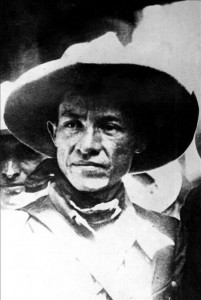
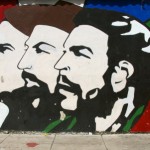
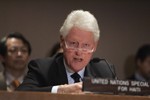
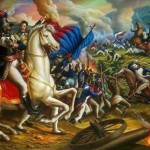
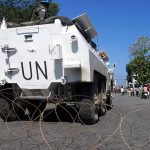
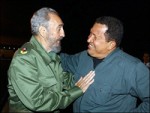
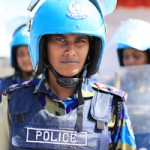
Beautifully written essay on the very important subject of Identity. A people without an identity are lost and will not be found until they have asserted their true Identity. Loved reading this.